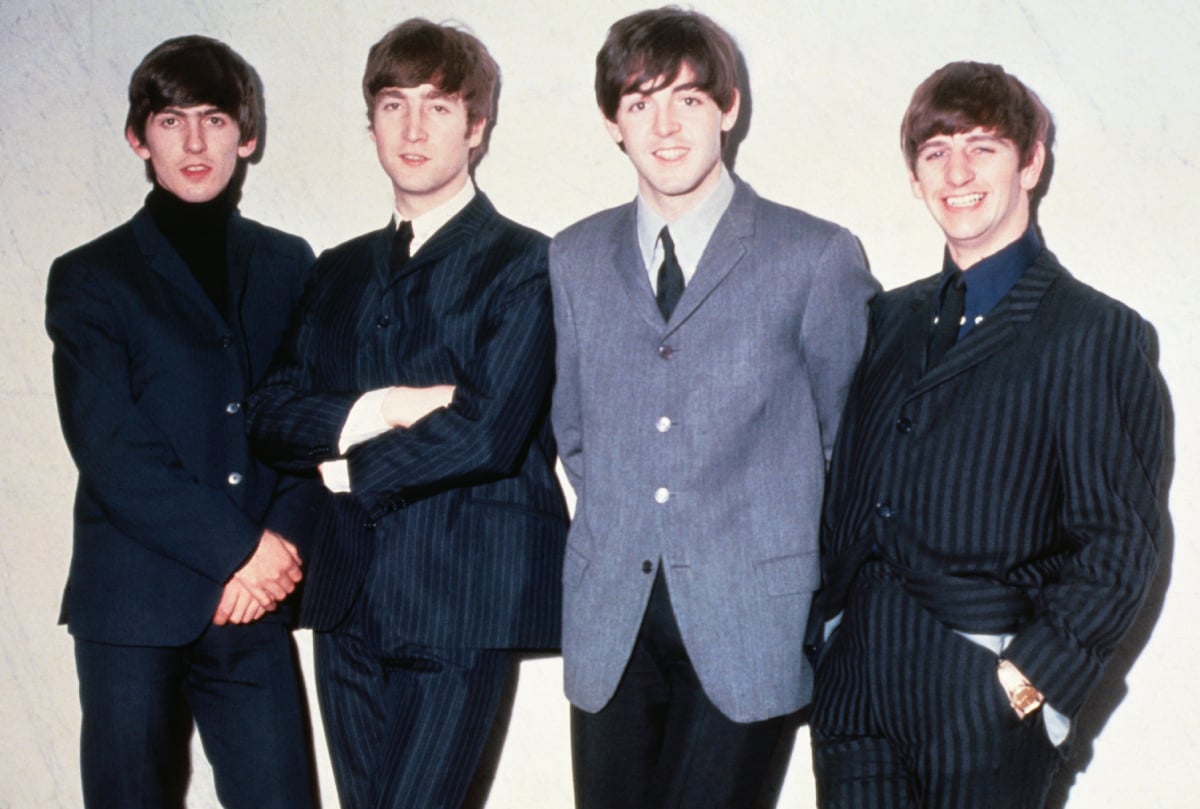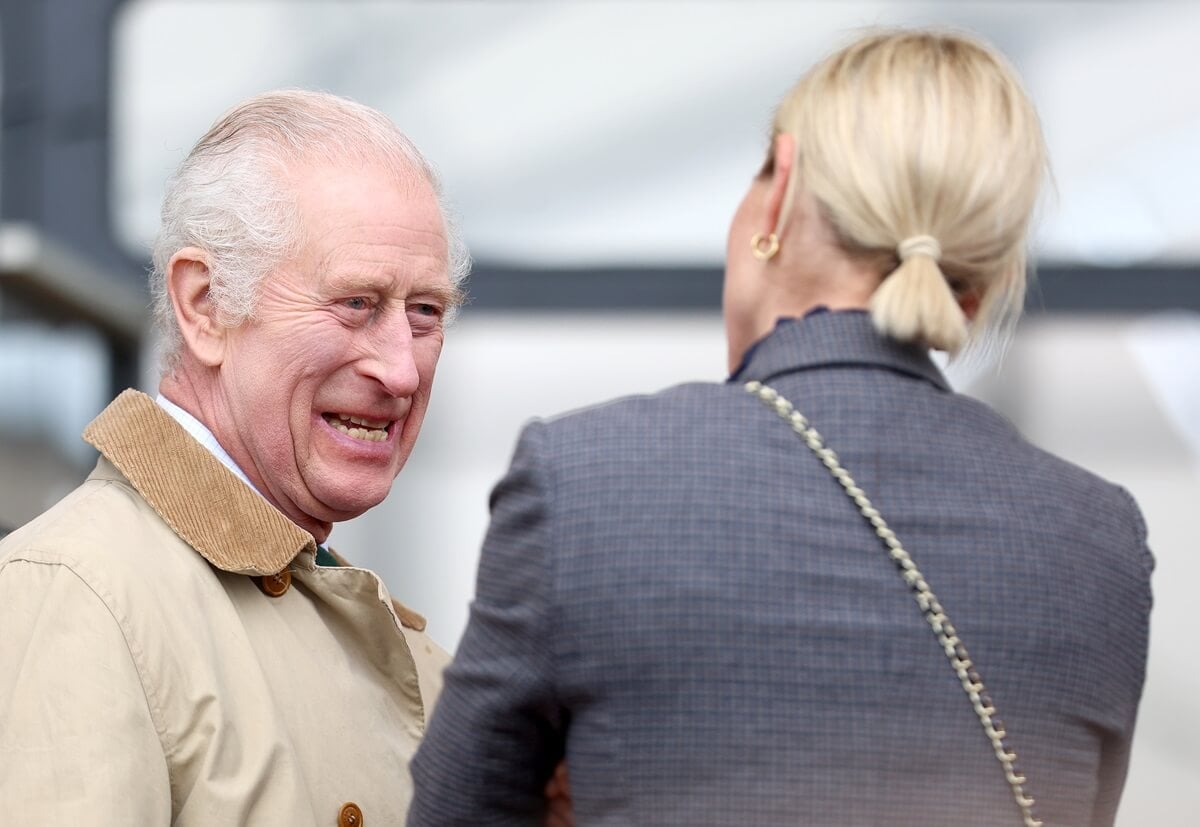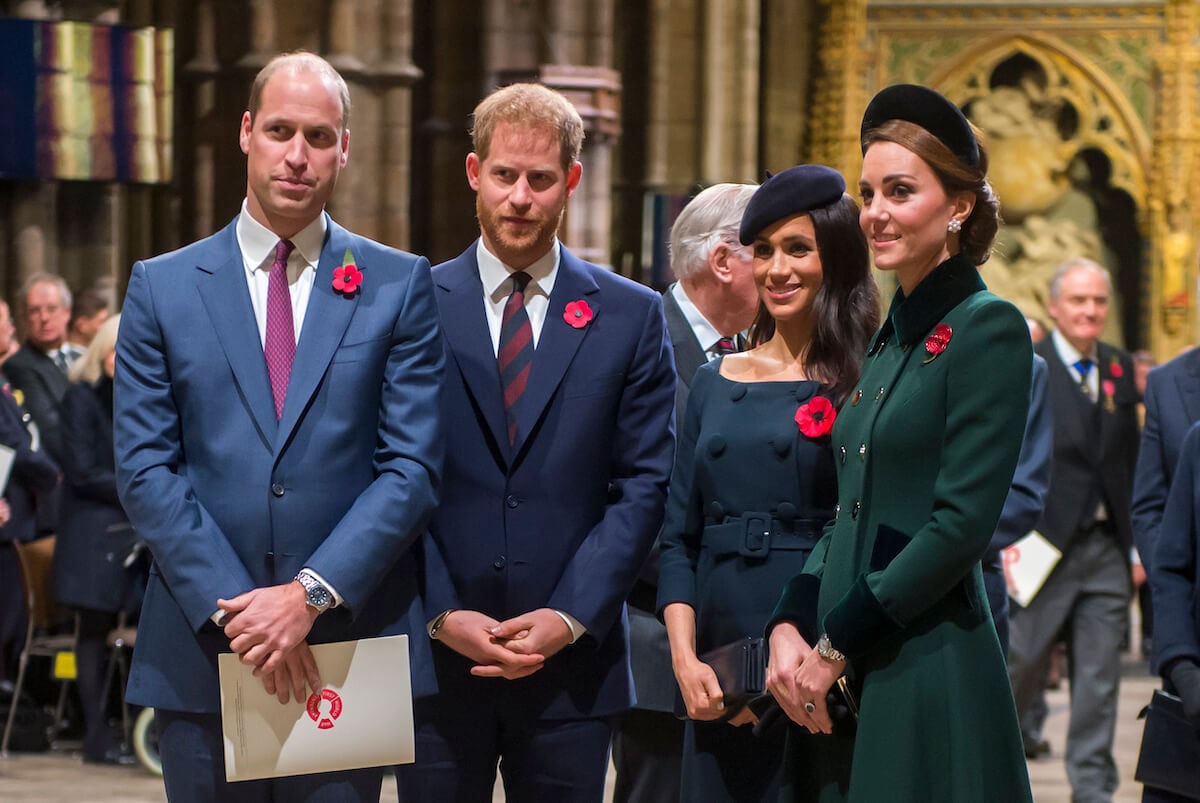
Eleanor Rigby Was a Real Person and 14 Other Facts You Probably Don’t Know About The Beatles
The Beatles are still remembered as one of the greatest bands (if not the greatest) in rock music history. Sixty years after the Fab Four led the British invasion in America, songs created by John Lennon, Paul McCartney, George Harrison, and Ringo Starr are still considered by many to be a musical gold standard that stands the test of time.
But while their music endures, there may be some things about the Beatles that you didn’t know (or that you forgot about). To catch you up on your Beatles trivia, here are 15 things you probably didn’t know about this legendary band.

15. The Beatles’ song ‘Strawberry Fields Forever’ is named after a real place
John Lennon lived with his aunt and uncle, Mimi and George Smith, in Woolton, England, from the time that he was five years old. According to the book Many Years From Now by Barry Miles, one of John’s favorite spots to explore with his friends growing up was the “secret garden” of the nearby Salvation Army orphanage, known as Strawberry Fields.
“I’ve seen Strawberry Field described as a dull, grimy place next door to him that John imagined to be a beautiful place, but in the summer it wasn’t dull and grimy at all: it was a secret garden,” McCartney explained.
“John’s memory of it wasn’t to do with the fact that it was a Salvation Army home; that was up at the house. There was a wall you could bunk over and it was a rather wild garden, it wasn’t manicured at all, so it was easy to hide in.”
After the song’s release, a memorial section of New York’s Central Park was also given the name Strawberry Fields.
14. February 11, 1963, was an extremely important day in music history
As Mental Floss points out, there were no four people on Earth who were more productive on February 11, 1963, than The Beatles. On that single day, the four boys from Liverpool recorded 10 songs during a 12-hour session for their debut album Please Please Me.
The recording session included Twist and Shout, which required Lennon — who was already extremely hoarse — to shred the remainder of his voice.
“The last song nearly killed me,” Lennon recalled in 1976. “My voice wasn’t the same for a long time after; every time I swallowed it was like sandpaper. I was always bitterly ashamed of it, because I could sing it better than that; but now it doesn’t bother me. You can hear that I’m just a frantic guy doing his best.”
13. Richard Starkey is Ringo Starr’s real name
Born in Liverpool in 1940, Richard Starkey — called “Ritchie” by his loving mother — started playing drums at the age of 13 in a hospital band while recuperating from tuberculosis. By 17, Starkey had founded the Eddie Clayton Skiffle Band.
In 1961, Starkey joined the Beatles when he replaced the band’s original drummer, Pete Best. In public, he then became known as Ringo Starr. But in private, he was still Richard. In fact, there are studio recordings where McCartney can be heard saying “Ready, Richard?” before counting the band off.
So, where did the Ringo Starr name come from? Starkey’s first nickname was Rings, which came from his habit of wearing large amounts of jewelry on his fingers. Rings eventually turned into Ringo so it would sound more cowboy-ish. And of course, Starr is just short for Starkey.
12. Eleanor Rigby was a real person
Eleanor Rigby was a song that McCartney wrote about a lonely old woman who dies in a church, with no one to mourn her. He has always claimed that he came up with the name Eleanor Rigby because of actress Eleanor Bron — who appeared in the 1965 Beatles film Help! — and a shop in Bristol, England, called Rigby & Evens Ltd. Wine & Spirit Shippers.
There’s no reason to dispute McCartney’s claim of how he came up with the song title. But, there is more to the story. McCartney and Lennon first met in 1957 at a gathering at St. Peter’s Church in Liverpool. Nearby, there was the Woolton Cemetery, which is where the young boys often hung out together before they became famous.
In that cemetery is a gravestone for a woman named Eleanor Rigby, a scullery maid who died in 1939 at age 44. McCartney has insisted that the gravestone had nothing to do with the song, even though he surely saw it multiple times.
“It’s quite possible McCartney saw the Rigby grave and just stored it away in his head. It’s just possible that he kept that in his mind. But we actually don’t know, and I think McCartney himself doesn’t know,” an expert said, per the BBC.
11. Paul McCartney chose the photo for the cover of ‘Abbey Road’
On Friday, August 8, 1969, the four Beatles gathered for one of their most famous photo shoots ever. For the front of their last-recorded album, Abbey Road, freelance photographer Iain Macmillan took photos of the band on a crosswalk outside of the famous Abbey Road Studios.
The photo of the four men walking across the street on a zebra crosswalk was McCartney’s idea, and there are six different images from the photoshoot. Four of them featured the band walking in the opposite direction, toward the studio. And two of the shots featured McCartney in sandals.
There is also a photo taken by Linda McCartney that features the band getting ready for the shoot while talking to an elderly lady, and Paul fixes Ringo’s jacket collar. Ultimately, Paul chose the iconic shot that made it to the album cover because it was the only that featured the band walking in time. And, because they were walking away from the studio they had spent the previous seven years in.
10. Billy Preston could have been a member of The Beatles?
Throughout the band’s history, only one musician actually received a featured credit on a Beatles’ song — the 1969 single Get Back . The label reads, “The Beatles with Billy Preston,” which was unusual for the band.
They met the famed keyboardist when he was touring with Little Richard in the early 60s, and then Harrison reconnected with Preston in 1969. He went to a Ray Charles concert that featured Preston on keyboards, and that led to Harrison asking him to join the Beatles on the track Get Back.
Preston was such a welcome presence in the studio — at a time there were high tensions in the band — that Lennon proposed the idea of making him a Beatle. McCartney reportedly vetoed the idea because the band was about to break up.
9. Lucy was a classmate of Julian Lennon’s
There have been many stories surrounding the meaning of Lucy in the Sky with Diamonds. The title acronym might actually be LITSWD, but it’s the letters L, S, and D that most fans take notice of. Is the song and title actually loaded with drug references, though? To this day, people are still debating what “marmalade skies” and “kaleidoscope eyes” actually are.
But the song’s title, at least, had nothing to do with drugs. Lennon was apparently inspired when his then 4-year-old son Julian showed him a drawing of a girl named Lucy who sat next to him at school. He showed off his proud sketch and told his dad that she was “in the sky with diamonds.”
Julian eventually rekindled his friendship with Lucy Vodden in the 2000s, and frequently sent her flowers. She died in 2009 at the age of 46 from complications related to lupus.
8. The band’s name was inspired by Buddy Holly
Before they became The Beatles, the band was known as The Quarrymen — a term inspired by their school song. The original band lineup was Lennon and a few of his classmates from Quarry Bank High School in Allerton, a suburb of Liverpool.
Eventually, Lennon met McCartney and Harrison and they joined the band. While others dropped out to go to university. Because all of his old schoolmates had left, Lennon decided it was time to change the band’s name in 1959/1960 because it was no longer appropriate.
Finding inspiration from Buddy Holly and the Crickets, they liked the idea of using an insect. And because Lennon loved puns, he changed the spelling of beetles to Beatles.
Before they landed on that name, though, they considered Johnny and the Moondogs, the Rainbows, and the British Everly Brothers.
7. Who was Stu Sutcliffe?
In the early days when the band was living and working in Hamburg, Germany, McCartney and Starr were not the band’s rhythm section. Instead, a friend of Lennon’s from art school — Stu Sutcliffe — was on bass and McCartney was on rhythm guitar. This was at the same time they had their original drummer, Pete Best.
Sutcliffe left the band to pursue a relationship with German photographer Astrid Kirchherr and to study art, but died in his 20s due to a brain hemorrhage. Meanwhile, the Beatles replaced Best with Starr after the band scored their first record contract.
6. John Lennon was disappointed when he met his hero, Elvis Presley
Lennon was a huge fan of Elvis Presley when he was a teenager, and this was a big reason that Lennon pursued a career in entertainment. He even went so far as to dress like Presley and comb his hair the same way.
But when Lennon finally got the chance to meet Presley — which was arranged by Beatles manager Brian Epstein — he thought that the King of Rock and Roll was disinterested in talking with the band and wasn’t engaging in person. Per Music in Minnesota, the meeting was friendly and they did enjoy a brief jam session, but Lennon was disappointed after meeting his musical hero.
5. The final chord from The Beatles’ ‘A Day in the Life’ was difficult to achieve
The iconic Beatles catalog features the song A Day in the Life, the closing track from their 1967 album Sgt. Pepper’s Lonely Hearts Club Band. The final moment of the song is a thundering piano chord that rings out for a whopping 53 seconds.
To achieve this massive final chord, the band got some help from roadie Mal Evans. He joined Lennon, McCartney, and Starr in simultaneously playing an E major chord across three different pianos. It took nine takes in total to get the timing exactly right.
4. They didn’t think American teenagers would be interested
When the Beatles flew to America for their first tour and appearance on The Ed Sullivan Show, the four band members weren’t convinced that American teenagers would be interested in a foreign band and their music. However, they had nothing to be worried about. Their TV appearance drew an audience of millions, and every show in America was sold out.
3. Fans wouldn’t recognize the early look of The Beatles
When they first made a splash in America, the Beatles wore floppy haircuts and dressed in smart, black suits with skinny ties. During interviews in the early days, they were also known for their cheerful wit.
But before they landed in America, the Beatles performed in various clubs throughout Liverpool and Hamburg as a much scruffier band. They wore leather jackets and jeans with cowboy hats, and had an “in your face” rock attitude on stage, that sometimes included the band members eating during performances.
Manager Brian Epstein told them to clean up their act — and their look — if they wanted to make it big.
2. Bob Dylan introduced the band to marijuana
During their 1964 tour of the United States, the Beatles met Bob Dylan, and the singer/songwriter offered them some marijuana to smoke. The band enjoyed their cannabis experience with Dylan, and all four ended up becoming regular users.
Harrison actually had a special bond with Dylan, and they collaborated numerous times over the years while maintaining a lifelong friendship. In 1968, Harrison stayed at Dylan’s New York home for weeks and they wrote the song I’d Have You Anytime. Two decades later, they were bandmates in the Traveling Wilburys.
1. George Harrison performed in America before the Beatles
Before the Fab Four landed at New York’s JFK airport in February 1964, George Harrison had already visited the United States and played a show. In the fall of 1963, Harrison went on an 18-day trip to America to visit his sister Louise and her husband George Caldwell.
During his stay, Harrison played with The Four Vests band at the VFW Hall in Eldorado, Illinois. In the second set, he took over lead guitar and then he sang Roll Over Beethoven and Your Cheatin’ Heart.



